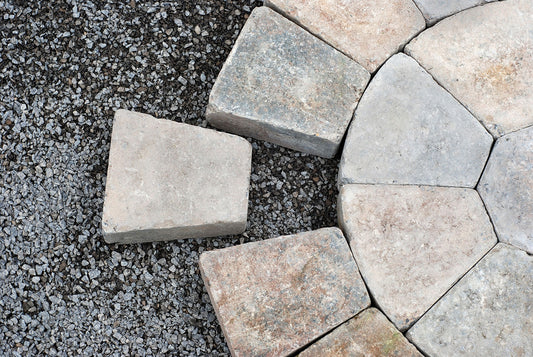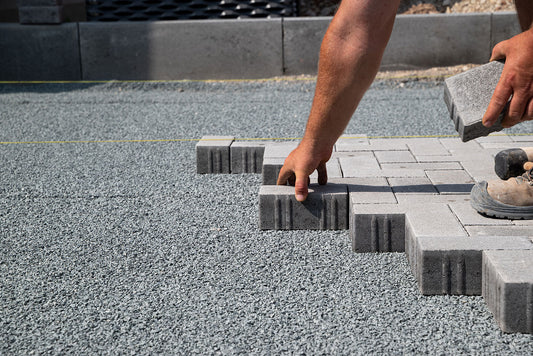Preparation Before Installation of Paver Sand
Before installing anything, preparation is key. Just as a painter needs a clean canvas, you also need the perfect base for your polymeric sand. Let's walk through the essential steps to ensure your Rhino Polymeric Sand installation is flawless.
First, drainage is crucial. Before anything else, you need to make sure your base material is free-draining. This means your bedding layer, which acts as a leveler for your pavers, should allow water to pass through. Whether you opt for concrete sand or a 1/4-chip stone, steer clear of materials like stone dust that can trap water, preventing your polymeric sand from setting properly.
Second, a clean surface is needed to make sure nothing else sits in between your stones but the sand. Sweep away any dust and debris. You can use a leaf blower or a simple broom, but the goal is to have a pristine surface. This not only ensures a better bond but also enhances the final look of your project.
Third, while Rhino Polymeric Sand is resilient, it's essential to check the weather forecast. Ensure there's no rain predicted for the next 24 hours. This gives your sand ample time to set without any interruptions.
Finally, temperature also matters. Just as you wouldn't plant a seedling in freezing weather, be mindful of the temperature when installing your polymeric sand. Most polymeric sands, including Rhino, have a specific temperature range for installation. So, always check the guidelines before installation.
With these preparation steps in place, you're now set to move on to installing your Rhino Polymeric Sand.



